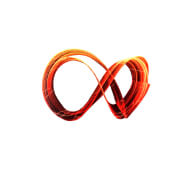What Is it?
This handdrawn canvas using the metaphor of an iceberg is digging deeper and getting below what is on the surface of what is happening. After all 85% of the icebergs lies below the surface of the water.
This canvas is an engaging and fun way to get a team reflecting on their performance and looking for root causes. It helps ensure that everyone gets heard and alignment is created.
When to Use the Canvas?
As a leader or facilitator there are key moments in a team's journey when a deeper reflection and regrouping are required. Use this canvas at these touch points. This may be scheduled periodically to support moving from forming, storming, norming and performing (Bruce Tuckman's team development model) or when you notice team behaviors require an intervention.
This canvas is particularly helpful when you realize that limiting mindsets and assumptions are getting in the way of the team's progress.
Why Use It?
Because handdrawn elements bring a whimsical and fun energy into work, and who couldn't use more of that on a day to day basis?! Plus no one ever complained of too much alignment or shared understanding in a team.
How to Use It?
The prompt questions in this template support reflection and reconnection. The prompt questions in this canvas are borrowed from Systems Thinking.
(Original source of the iceberg model is believed to be Anthropologist Edward T. Hall)
These prompt questions are suggestions, feel free to change these prompts to support the conversation you want to have with your team.
Start by focusing on the events that happened, then move to the trends, what is influencing these trends and down to the underlying assumptions impacting performance.
This template could also be used during change programs and/or in team or personal coaching conversations. Other versions of the iceberg model have been used to explore organizational culture.
Have fun and let the lighthearted spirit of the canvas ignite inspiration and creativity!

Island Inspirations
Facilitators & Experiential Learning Designers
Combing the magic of visuals and facilitation to create powerful learning experiences and to accelerate change.